‘The river will bleed red’: Indigenous Filipinos face down dam projects
By Karlston Lapniten
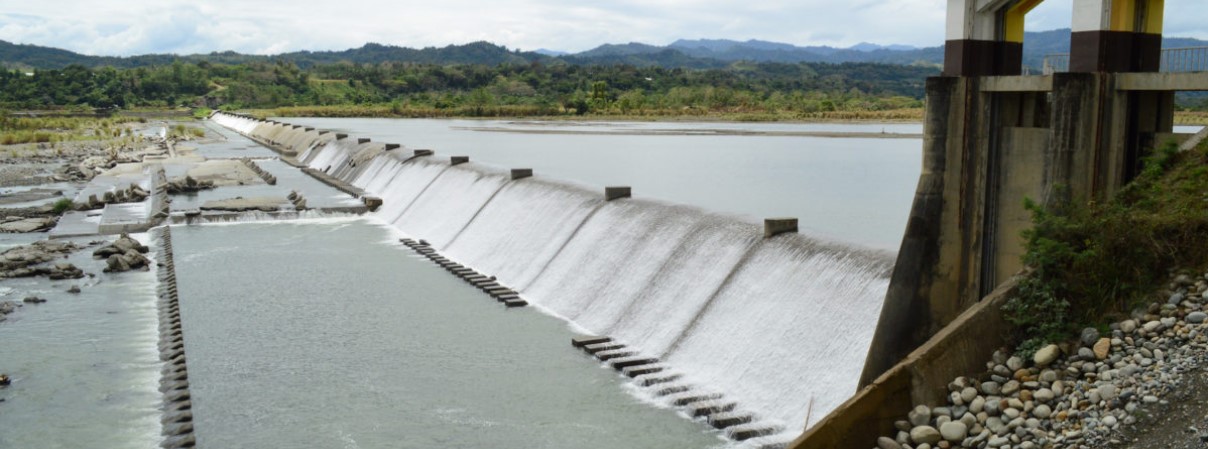
- For more than five decades, Indigenous communities in the northern Philippines have pushed back against the planned construction of hydropower dams on the Chico River system.
- The river is of great importance to Indigenous communities in the provinces of Kalinga and Mountain Province, who call it their “river of life” and have depended on it for generations.
- The Upper Tabuk and Karayan dams have been proposed in some form or another since the 1970s, but are now backed by corporations created by Indigenous groups, causing divisions among communities.
- Critics of the dams have questioned the Indigenous consent process, a requirement for a project on tribal lands, alleging that some of the community support was obtained through bribery.
KALINGA, Philippines — On Nov. 12, 2020, Typhoon Vamco cut across the northern Philippines, flooding more than 60 cities and towns in the Cagayan Valley. Millions of dollars’ worth of property and crops were damaged.
Considered the worst flooding to hit the region in almost half a century, Vamco’s impact on communities was largely attributed to waters released from the Magat dam, one of the largest in the Philippines. The dam sits on the Magat River, a tributary of the Cagayan River, about 350 kilometers (220 miles) northeast of Manila.
In just 11 hours, the dam discharged more than 265 million cubic meters (70 billion gallons) of water — almost a third of the reservoir’s capacity, and enough to fill nearly 110,000 Olympic-sized swimming pools.
The disaster has rekindled criticism of dam-building in the region, including by longtime opponents of two proposed hydropower projects on another tributary of the Cagayan, the Chico River.
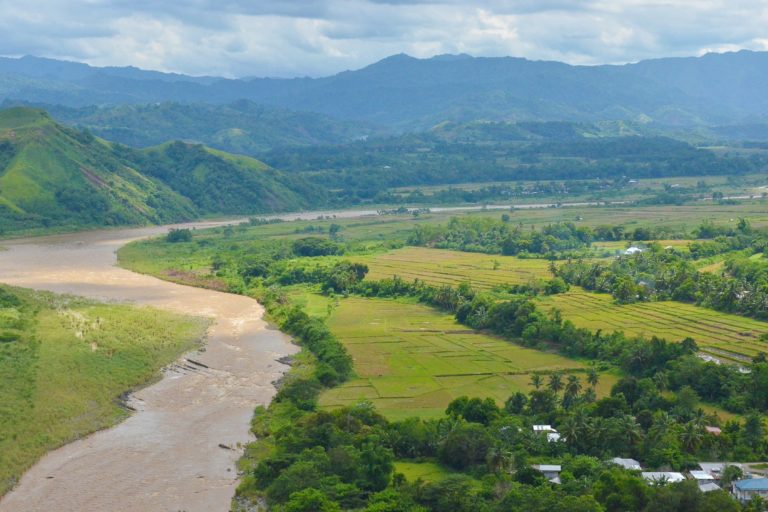
The Chico River is the longest tributary of the Rio Grande de Cagayan, or the Cagayan River, the longest river in the Philippines. Image by Erwin Mascariñas
“The Cagayan flooding verified one of the many reasons why we maintain our opposition to damming any part of Chico River,” says Danny Bangibang, a leader of the Indigenous communities of Kalinga province, where the rivers are located. “We will not wait for the same disaster to happen in our own soil.” In his leadership role, Bangibang is entrusted with mediating talks among Indigenous communities and facilitating interaction with government agencies.
The two planned hydropower plants, the Upper Tabuk dam and the Karayan dam, are both set to be built on ancestral domain lands. Their developers have touted them as being pivotal to providing cheaper electricity and a consistent supply of water for irrigating upland farms. Some Indigenous groups and activists, however, have opposed the projects since 2008, questioning the exclusion of downstream Indigenous communities from the consultations, and alleging bribery and sweetheart deals surrounding the consent process.
River of life
The Chico River runs 175 km (280 mi) through Mountain Province and Kalinga provinces before merging into the Cagayan River. The Chico and its 12 main tributaries are the lifeblood of Indigenous communities in the Cordillera region of the northern Philippines, providing a bounty of fresh water for drinking and for irrigation. Its watershed is also home to a wealth of wild flora and fauna;28 species of wildlife found here are endemic.
“Similar to other civilizations around the world, communities and culture developed adjacent to the river,” Dominique Sugguiyao, Kalinga’s Environment and Natural Resources Officer (ENRO), tells Mongabay. “People refer to Chico as the ‘river of life’ because it is rightly so. Our ancestors drew living from it and we continue to do so.”
“Indigenous people have always been the stewards of land, including rivers from which they draw a valuable symbiotic relationship,” says Michael Sugguiyao, Dominique’s brother and the Indigenous Peoples Mandatory Representative (IPMR) to the provincial legislature of Kalinga.
Indigenous peoples have maintained their traditional knowledge systems, passed down from one generation to another, that prescribe the preservation and maintenance of the forests, he says. In those practices, forests are protected because they sustain the rivers with waters, which in turn, sustain the communities with food and livelihood — an unbroken cycle even in the 21st century, Michael Sugguiyao adds.
Any venture that disturbs or hampers the natural flow of the river will have an immense and profound negative effect on this ecology and the people who depend on it, Dominique Sugguiyao says.
Analyses of the environmental impacts of the Karayan dam submitted to the Department of Environment and Natural Resources (DENR) show that earthmoving activities during construction could increase water turbidity, which could decrease algae diversity. This would reduce the abundance of zooplankton, which feed primarily on algae, sending a ripple effect through the aquatic food chain. The natural migration and movement of freshwater species will also be impeded, and installing fish ladders is not a solution that will work for all aquatic species, Dominique Sugguiyao says.
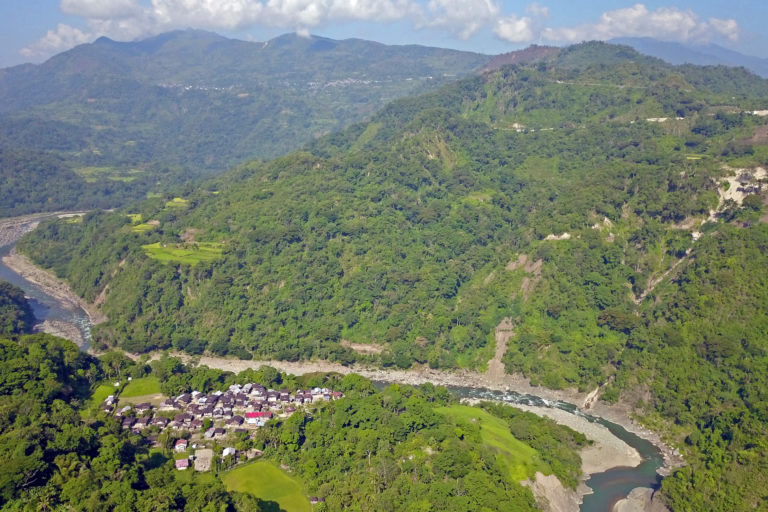
The uplands of the Cordillera mountain range houses various Indigenous groups in the northern Philippines. Image by Erwin Mascariñas
Overall, the interconnectedness of biological communities will be disrupted and the productivity of the river system will be reduced, the analysis concluded.
The river is also a source of aggregate (sand and gravel) that today fuels a multi-million-peso industry in Tabuk, the Kalinga provincial capital, supplying construction projects across the province and in adjacent towns. Dams would also halt the flow of aggregate, destroying the livelihoods that depend on it. “The same [analysis] is applicable if the Upper Tabuk Dam will be constructed,” says Bangibang, the Indigenous leader. “Imagine the extent of the damage if both dams will [be] push[ed] though?”
The analysis of the effects of the Karayan dam applies to the Upper Tabuk dam, and could spell greater damage if both are constructed, he said.
Upper Tabuk dam: Dividing communities
The proposed Upper Tabuk dam would feed a 17-20-megawatt hydroelectric generator from a reservoir of about 5 million m3 (1.3 billion gallons) on the Tanudan River, one of the main tributaries of the Chico. It’s also expected to provide year-round irrigation for the rice terraces and fields in Kalinga, potentially doubling rice production in the “rice granary” of this mountainous part of the northern Philippines.
The dam would be built in the village of Dupag village, which lies within the officially recognized ancestral territory of the Naneng people. In 2009, members of the Minanga, then a sub-tribe of the Naneng, formed an Indigenous-owned corporation, Kalinga Hydropower Inc. (KHI), to back the construction of the Upper Tabuk dam at an estimated cost of 2 billion pesos (about $40 million at the exchange rate at that time).
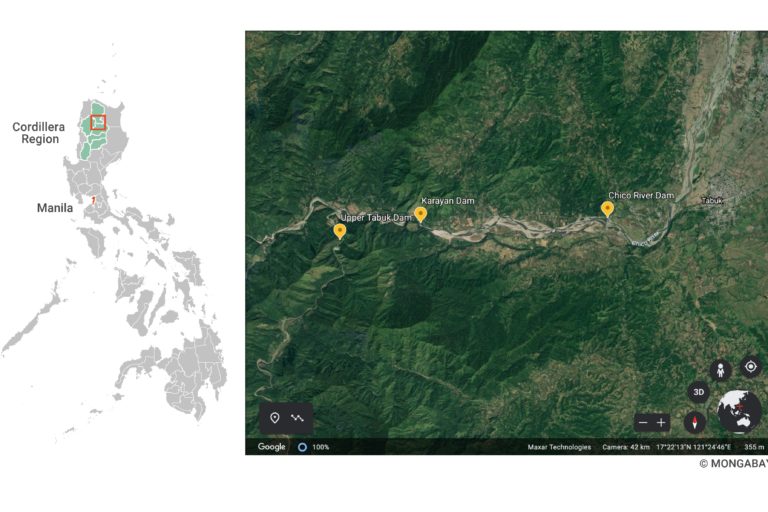
Left map: The Cordillera region is composed of 6 provinces: Abra, Apayao, Benguet, Ifugao, Kalinga and Mountain Province. Right map: The locations of the Chico Dam, part of the Chico pump irrigation project, and the two planned hydropower dams for construction along the Chico River
KHI partnered with DPJ Engineers and Consultancy (DPJ), owned by Daniel Peckley Jr., a civil engineer who specializes in hydro projects and whose firm operates the 1 MW Bulanao hydropower plant, also in Kalinga.
Despite scattered protests, the project obtained the necessary permits from government agencies. By 2011, it was only lacking major investors to begin construction.
In April 2012, the opposition unified, with more than a hundred tribal leaders from 18 affected villages petitioning the National Commission on Indigenous Peoples (NCIP), the Department of Energy (DOE), and the Department of Environment and Natural Resources (DENR) to cancel the permits.
They accused KHI and DPJ of downplaying the scale of the proposed dam by painting it as “a small hydropower development,” and said that the size of its water reservoir puts it in the category of a large dam under the standards set by the International Commission on Large Dams and the World Commission on Dams.
Mongabay made multiple attempts to contact Peckley by email and by sending a representative to his office but did not receive a response by the time this article was published.
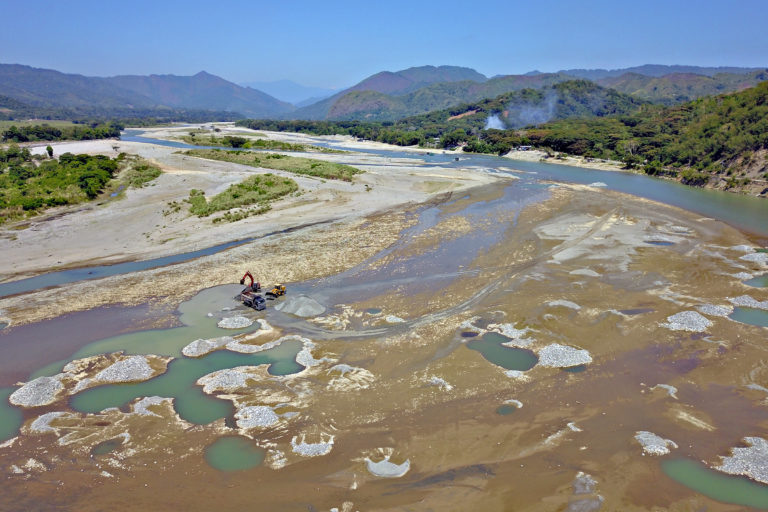
The Chico River is a major source of quarry aggregates in the Cordillera region. Image by Erwin Mascariñas
Two months after the petition, the NCIP cancelled the certificates it had issued for the project. Five years later, in 2017, DPJ revived its proposal and reapplied for free, prior and informed consent (FPIC), a legally mandated process for projects with the potential to affect Indigenous peoples and their territories.
The following year, the NCIP identified five tribes, including the Minanga and the Naneng, as the only Indigenous groups who would be impacted by the project and thus who should be consulted for the FPIC.
In response, more than a thousand people from different tribes along the Chico River submitted their own petition against the Upper Tabuk dam, denouncing the potential impact on downstream Indigenous communities. These downstream groups say all tribes whose ancestral domains are connected to the flow of the Chico and the Tanudan should be included in the consultations.
“What is done upstream will affect the river flow in the downstream communities,” Bangibang says. “It is common sense that they too … should be consulted.” He also called into question the validity of the company’s original 2008 feasibility study, saying it skipped an FPIC process that should have been carried out before the study was conducted.
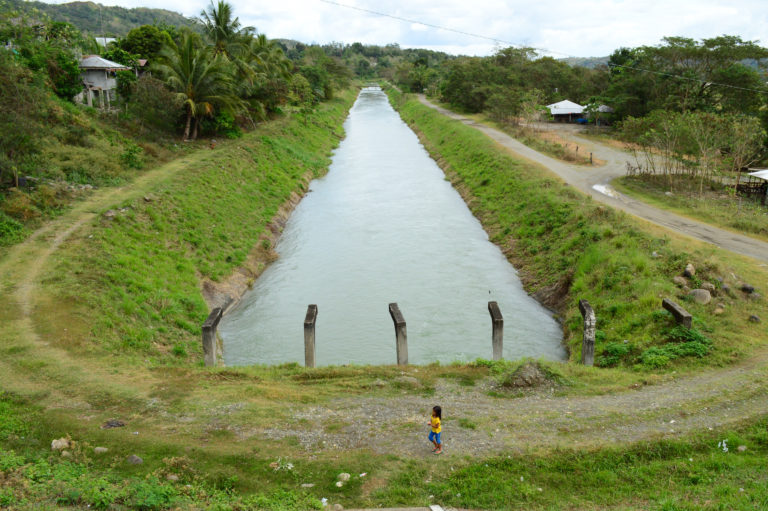
The main canal of the Upper Chico River Irrigation System in Tabuk, Kalinga. Image by Karlston Lapniten for Mongabay
The hardships of agricultural life, however, have persuaded many in these farming communities to support the dam project and its promised benefits, undermining opposition to the dam, says Andres Wailan, an elder and bodong (peace treaty and alliance) holder of the Malbong tribe.
In 2019, three Indigenous communities, including the Minanga and Naneng, consented to the dam project, leaving two other communities opposed to it: the Talloctoc and Malbong. Leaders of the consenting tribes said in a November 2019 community hearing that they were won over by the promise of jobs, infrastructure and a share of tax revenue.
“We cannot blame the people [who consented] but we cannot also just let them make bad decisions,” Wailan tells Mongabay.
Within affected communities, the split has caused tensions, including among members of the same families, straining the strong kinship ties of the Indigenous peoples, says Naneng leader Jerry Bula-at, a member of the Timpuyog ti Mannalon ti Kalinga (Federation of Farmers in Kalinga), or TMK, a progressive group advocating for farmers’ and Indigenous people’s rights.
Within his own family, some members are in favor of the Upper Tabuk dam because of the promised access to better irrigation and farming development, he says. Similar rifts have appeared in downstream communities.
“If a project causes division among Indigenous communities, it should be enough grounds for the NCIP to stop the project,” Bula-at says.
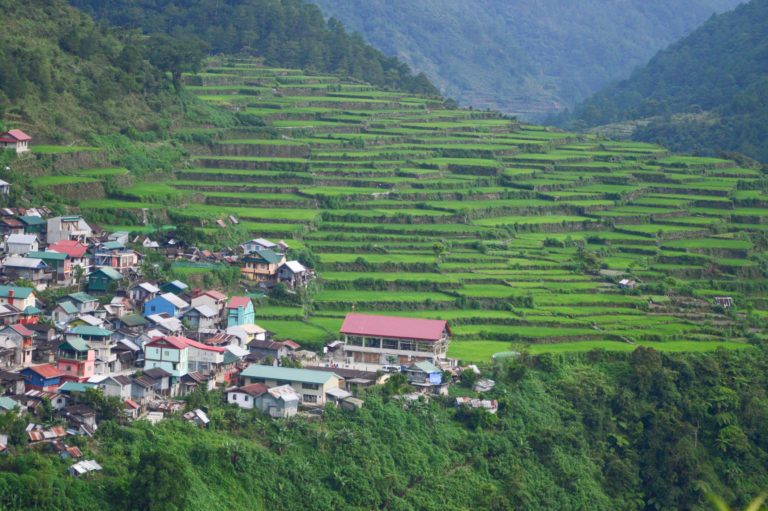
The Cordillera region is considered the primary source of upland vegetables. Image by Karlston Lapniten
The NCIP did not respond to Mongabay’s request for comment. But in a memo to its Kalinga office, dated Jan. 11, 2021, a copy of which Mongabay has seen, the NCIP regional office said the issues and concerns regarding the Upper Tabuk dam need to be settled first and “a common and united stance” among affected Indigenous communities must be achieved before the developer’s FPIC application can proceed.
Bula-at says Peckley should back out of the project knowing it has brought, and continues to bring, tension and division to Indigenous groups. “He claims that he is one of us but he does not act like one,” Bula-at says. “Indigenous peoples know that values and preservation of healthy kinship stand above monetary gains.”
Karayan dam: Wine and dine and bribes
A few kilometers from the proposed site of the Upper Tabuk dam, a larger project, estimated to cost 5.18 billion pesos ($104 million), has stalled due to violent opposition. The 52-MW run-of-the-river hydropower project is a venture by the Karayan Hydropower Corporation (KHC), which is, in turn, a joint operation of San Lorenzo Ruiz Builders and Developers Group, Inc., and the Union Energy Corporation.
Known as the Karayan dam, it would be built on the Chico River itself, in the village of Lucog, according to DENR documents obtained by Mongabay. Its 14-million-m3 (3.7-billion-gallon) reservoir would displace five communities. DENR identifies the project as “environmental critical,” meaning it has “high potential significant negative impact.”
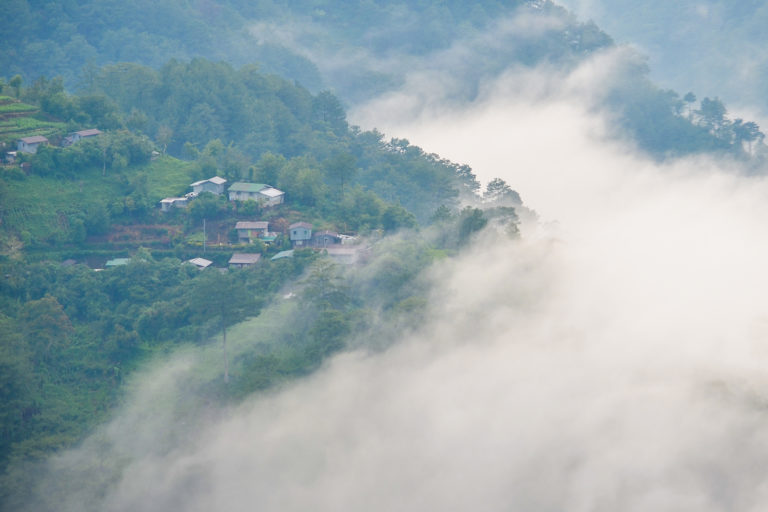
The Cordillera region is home to 1.2 million Indigenous peoples. Image by Karlston Lapniten
Like the Upper Tabuk dam, the Karayan dam faced immediate opposition from Indigenous groups for its perceived impact on ancestral domain lands and the environment. It has also caused rifts within the community by “distorting information,” Bula-at says.
“They used the same deceptive tactics they used in gaining support for the Upper Tabuk dam,” he says. “They wined and dined people to manipulate them and sow disunity as a means to divide and conquer.”
Instead of directly talking to affected households, Bula-at says, developer KHC talked to residents whose properties fall outside the proposed project site, promising financial benefits and creating disputes with family members whose own properties lie within the area that would be submerged. Residents speaking to Mongabay on condition of anonymity say KHC gave out cash and gadgets, promising even bigger rewards if they agreed to the dam’s construction.
KHC did not respond to Mongabay’s requests for comment.
Ultimately, most of the tribe’s voting members gave their consent to the project. In response, Bula-at and 88 other elders and members of affected communities filed another formal objection with the NCIP.
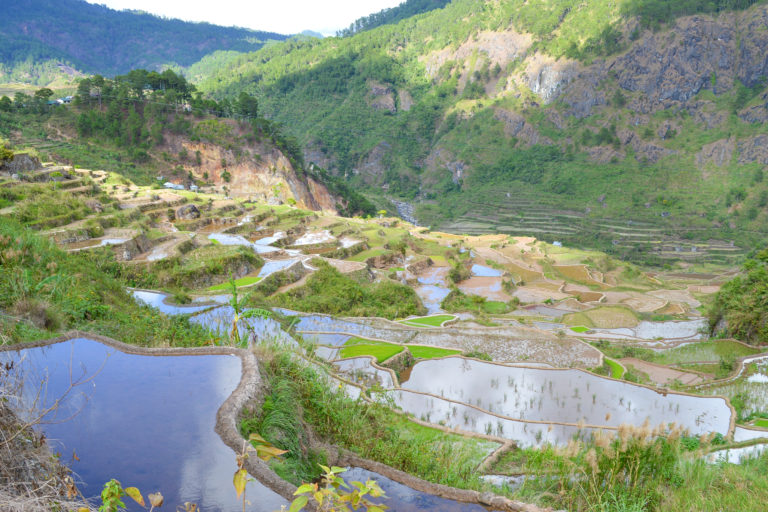
Rice terraces in the Cordillera region. Image by Karlston Lapniten
Since then, tensions have risen in the communities, while engineering surveys and community engagement efforts by non-tribe members have been met with resistance and hostility. (During a visit, this reporter was apparently mistaken for a company representative; residents threw stones and even chased him with a machete.)
Large signs reading “No to Karayan dam” and “Our lands are not for sale” have been painted on the roadside retaining walls and large boulders in the affected areas. In 2017, more than 300 people attended a protest in Tabuk, led by community members, local clergy, and Indigenous organizations like the TMK.
Throughout that year, the Indigenous groups maintained their staunch opposition and disdain for KHC and its employees. Residents showed up at consultation meetings but refused to sign the attendance sheets and disrupted KHC’s efforts to present its materials on the Karayan project.
The tensions dragged on until July 2018, when the NCIP suspended the FPIC process. It justified its decision on findings of technical violations committed by KHC and allegations that the developer had paid some of the community members.
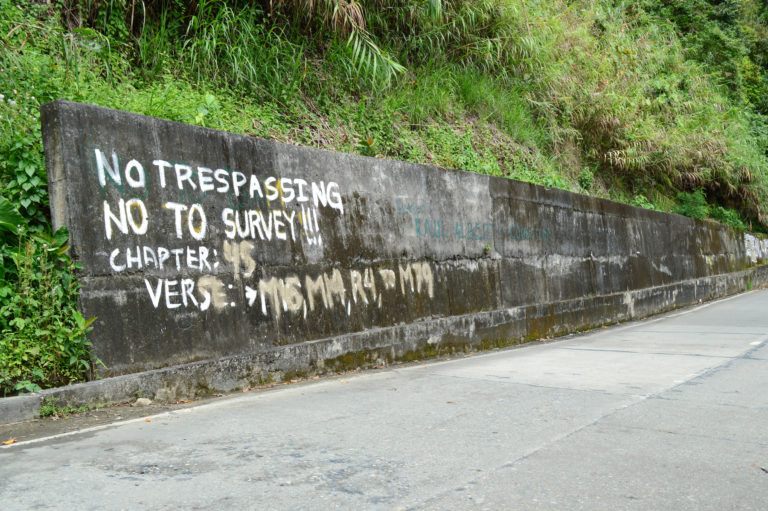
A roadside retaining wall vandalized with anti-dam messages. Image by Karlston Lapniten for Mongabay
Elders and officials from three villages said they met with a group of ostensibly new developers in January 2019 in an attempt to revive the consent process. But their efforts were rebuffed by residents.
On February 2020, a retaining wall along Naneng village was graffitied: “Don’t force me squeeze the trigger of my gun to speak the language of death. No to dam.” Another read, “No trespassing. No to survey. Chapter 45, Verse M16, M14, R4 to M79” — an allusion to the use of firearms. Residents won’t say who was responsible for the graffiti. A few days later, it was covered over in paint and mud.
‘The question is life’
Today’s opposition to the two proposed dams in Kalinga mirrors a similar resistance in the 1970s, when Indigenous communities joined forces to wage a decade-long struggle against the Chico River Basin Development Project (CRBDP).
A pet project of strongman Ferdinand Marcos while the country was under martial law, the CRDBP called for the construction of four massive hydroelectric dams that would have been the largest dam system in Asia at the time. Two of the dams would have been in Mountain Province, and two in Kalinga. The project’s sheer scale would have submerged Indigenous communities in eight towns, impacting around 300,000 people.
When their efforts to secure an audience with officials in Manila failed, the Indigenous groups resorted to civil disobedience, rolling boulders onto the roads to block construction workers and hurling their equipment into the Chico River.
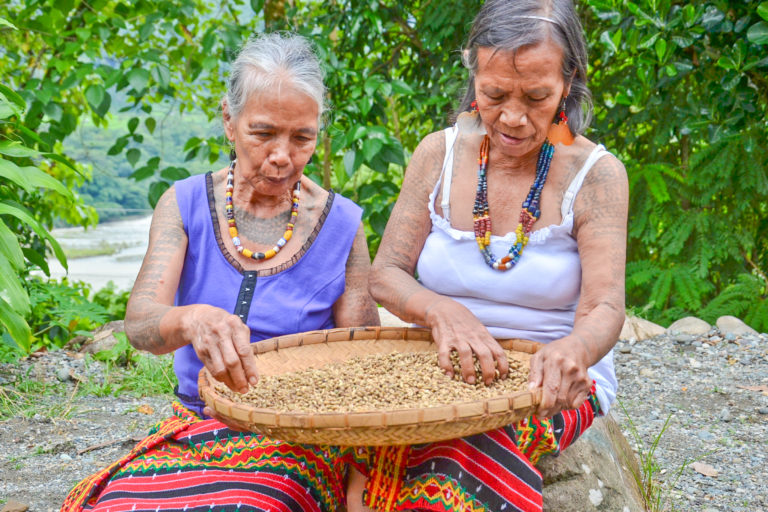
Indigenous women of the Cordilleras. Image by Karlston Lapniten
Indigenous women played a particularly significant role in the campaign. In 1974, Bontoc women drove away survey teams in Mountain Province, while in Kalinga the women tore down the workers’ dormitory in Tabuk four times. They used nothing but their bare hands, says Kalinga elder Andres Ngao-i, who was in his teens back then. “It is taboo to hurt women, much more unarmed, in the Kalinga culture,” Ngao-I says. “It was a strategy. If it were men who dismantled the camps, there would have been bloodshed.”
Upriver in the town of Tinglayan, Indigenous women from other communities tore down construction camps twice. They also stripped down to the waist and displayed their tattooed torsos and arms in front of government personnel and armed guards, in an act known as lusay, which is believed to cast bad luck.
Other members of the affected communities took up arms as part of a community militia, while many joined the armed wing of the banned Communist Party of the Philippines, the New People’s Army (NPA).
The Marcos government responded to the opposition by sending in the military and declaring the area a “free-fire zone,” where security forces had carte blanche to shoot perceived “trespassers.” From 1977, cases of human rights abuses and killings racked up.
The assassination in April 1980 of Macli-ing Dulag, an outspoken pangat (village elder) of the Butbut people of Kalinga, by the Philippine Army’s 4th Infantry Division while inside his home tipped the scales in favor of Indigenous groups.
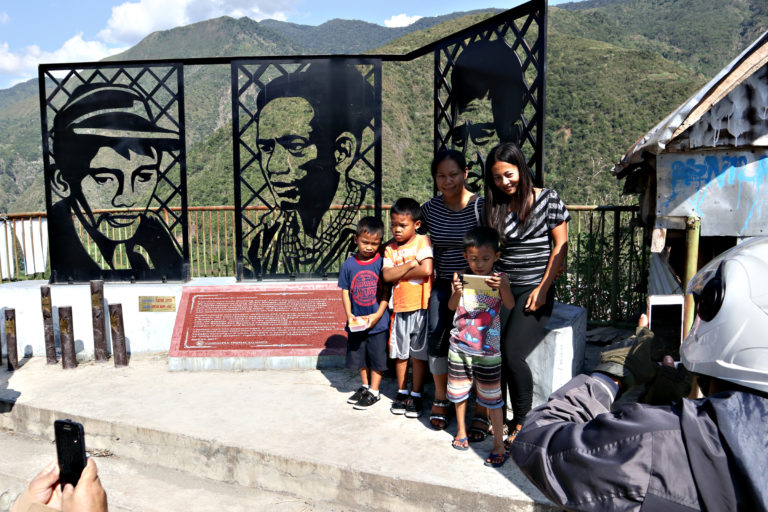
The Heroes’ Monument in Tinglayan, Kalinga, was erected in 2017 to honor local heroes of the anti-Chico Dam struggle and includes Macli-ing Dulag (middle). The monument has been dismantled in January 2021. Image by Erwin Mascariñas
“The question of the dam is more than political,” Dulag said in a prescient interview shortly before his death for a book authored by journalist Ma. Ceres Doyo. “The question is life — our Kalinga life. Apo Kabunian, the Lord of us all, gave us this land. It is sacred, nourished by our sweat. It shall become even more sacred when it is nourished by our blood.”
Just as he foresaw, Dulag’s death magnified the resistance and mobilized various sectors across the wider region. The violent struggle ended in 1986 with the CRDBP being abandoned. The whole experience forced the World Bank, which had financed the project, to revamp its operational guidelines for infrastructure projects that involve Indigenous peoples. It was also key to institutionalizing the FPIC process, which gave Indigenous groups legal control over their ancestral lands.
The World Bank released its revised global policy on Indigenous-affected projects in 1991 to include a wider definition of Indigenous peoples, encompassing those who have close attachments to their ancestral lands, and who are often susceptible to being disadvantaged in the development process.
But the war for control of the Chico River hadn’t ended. The specter of Marcos’s mega-dams resurfaced in 1987, when then-President Corazon Aquino issued an executive order opening up the electricity generation sector to private companies. The latter quickly moved in; today, there are three large hydropower dams operating inside the Cordillera region that includes Kalinga and Mountain Province, and at least five proposed dams.
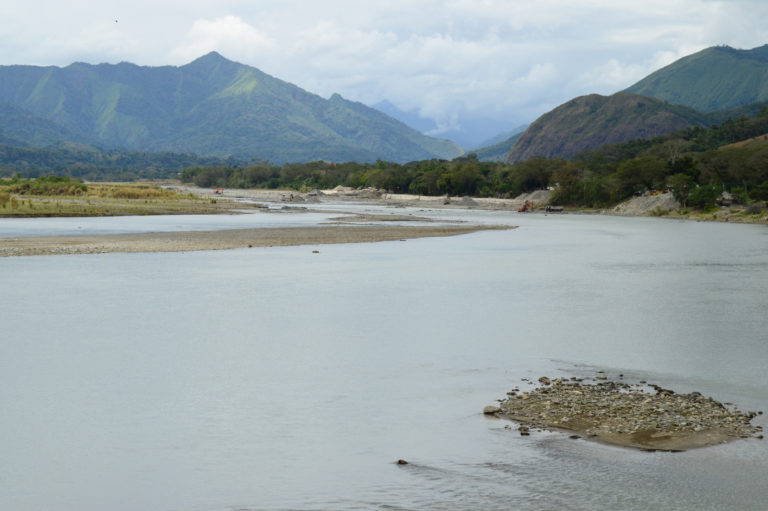
The Chico river pump irrigation system, the first infrastructure project in the Philippines that is funded by a loan from China, is set to irrigate 8,700 hectares of farmlands. Image by Karlston Lapniten for Mongabay
For Andres Wailan, the Malbong elder and veteran of the campaign against the Marcos-era dams, the current efforts to build support for the new dams rely on tactics that are all too familiar.
He says the process reeks of manipulation and deception, and suggests that the NCIP, which is meant to protect the interests of Indigenous groups, is complicit in it. “There are prescribed processes and guidelines that these proponents need to conform to, but they do not,” he says. “And the government office who are supposed to check these seem to turn a blind eye.”
Danny Bangibang, the Taloctoc tribal elder, says social media is a new battlefront, used by proponents of the dams to sow disinformation and vilify critics. “Proponents pick science and expert opinions that favor them and present them as absolute truths,” he says. “When this fails, they simply resort to made-up information.”
“We [Indigenous peoples] live here before the concept of dams,” Wailan says. “We will decide what we want with our lands and this must be respected. We will keep on fighting to maintain the natural flow of the Chico, unimpeded by any means, just as our forebears had done. We are not afraid; if the river will bleed red like before, then so be it.”
Banner image of the Upper Chico River Irrigation System. Image by Karlston Lapniten for Mongabay.
Source: Mongabay
